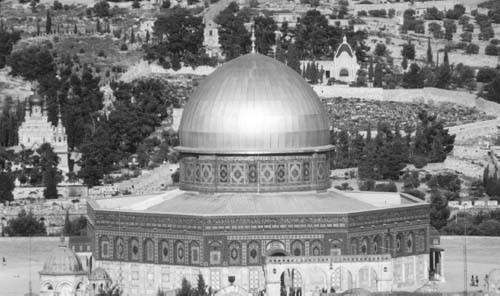IslamSigns and Symbols |
Have relics ever been important for Muslims? |
Popular Islamic spirituality in many parts of the world has included devotional practices associated with the tombs of holy persons. People visit the shrines of the Friends of God in hopes of gaining blessings and other favors as a result of saintly intercession. Many of these shrines hold items the saint is believed to have owned, such as headgear, a symbolic frock called the khirqa, walking staff, begging bowl, prayer beads, or symbolic weapon. Devotees who come to the shrines sometimes receive an object, such as a simple head wrapping or other token, that has been in contact with the holy person’s tomb. Only one object has been similarly associated with Muhammad.
Since the thirteenth century, Turkish Muslims believed they owned the so-called mantle of the Prophet, a green robe now in the possession of the Topkapi Museum in Istanbul. People there and in many other countries still recite a traditional poem called the Burda (mantle poem) during the observance of Muhammad’s birthday, but the mantle itself has never been the focus of devotional practice as have the relics of many Friends of God. As in many other traditions, sacred footprints function like relics in Islamic tradition. Pilgrims to Mecca pray at the “Station of Abraham” just opposite the door of the Ka’ba—a small glass and gold-colored cupola covers a small stone said to contain footprints God caused Abraham to leave in the softened stone as a proof of his prophethood. Tradition says that as Muhammad rose heavenward on his Ascension, he left still-visible prints in the large stone beneath the Dome of the Rock. Muhammad’s footprints became the inspiration for several types of visual symbolism still popular in North Africa, for example. Footprints of Ali have likewise been at the devotional center of a number of shrines.

The Dome of the Rock in Jerusalem is traditionally believed to be on the site of Solomon’s temple, built over a large rock formation from which Muhammad is said to have experienced his Mi’raj, or Ascension heavenward.
